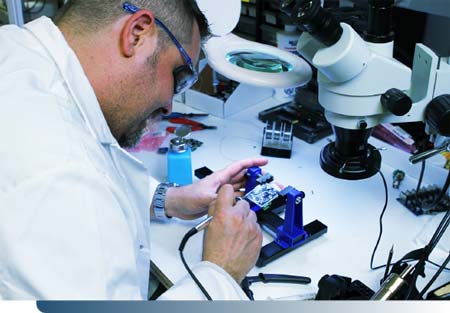When you set out to create something new, you quickly find out how deep you’re in. This is uncharted territory! You’re on your own now! It can be scary, it certainly can be stressful, but it doesn’t have to be something that you do alone, without any help or guidelines along the way. Instead of diving in blindly, it is extremely helpful to come up with an efficient plan backed by healthy amounts of research, so you can ensure your idea will make its way through design, development, manufacturing, and marketing into a concrete product that will sell.
Below, we’ve outlined the top three mistakes that developers make that can easily put a business — large or small — at risk. Keep these key points in mind when you’re starting your product development journey so you can easily avoid disaster.
Lack of a Plan
The first and perhaps most important step to developing a product is to outline a detailed plan for it. Ask yourself what it is that you want from this product. What is its purpose? What is your consumer market? Why? How will you appeal to that key demographic? What will your marketing look like? How will you roll out the product to the design team? The manufacturer?
These questions may seem silly or obvious, but if you haven’t thought each one of them through and made a written document of how you plan to address each portion of your plan, then you will not be prepared along the way. You can’t anticipate every issue that may arise, but you can think through as many as possible and put down some solutions on paper.
Ensure that your plan includes an approximate timeline of all foreseeable deadlines with a little flex time built in for cushion. A copy of this plan should be copied and given to (or clearly communicated in another fashion) your suppliers and manufacturers, as well as those on the marketing end responsible for the product launch. Not only will you be more prepared, but other stakeholders can be more prepared as well — and you’ll have a working document to refer back to if needed for accountability measures.
Lack of Research
Another glaring mistake that can happen when you’re setting out to design a new product is forgetting to do your research. There are three important components to research: understanding the product and its purpose, understanding the market, and understanding the client who will buy the product.
In order to understand the product and its purpose, you can always refer back to your planning document, which should include a vision for the product. You should always try to experience the product from the point of view of the customer; is the experience worthwhile? Does your vision for your product play out – in terms of efficacy, purpose, and aesthetics?
In terms of researching the market and consumer, you must not only gather accurate data but also thoroughly analyze it. How well do you know your market? How well do you know your customers? These are essential questions to answer by compiling data-driven research that will inform the rest of your entire design process.
Lack of Efficiency
Finally, the third hard-hitting mistake that product design and development teams make is a lack of efficiency, which almost always stems from a root cause: unclear or inconsistent communication.
When you have deadlines that must be set and met, communication between the design team, developers, and the manufacturing contact person must be constant and efficient. Without it, you run the risk of deadlines being missed, which results in broken systems of accountability and weakened trust.
Your communication plan must include frequent, most-pressing updates (as to not overwhelm); friendly (not annoying) reminders about upcoming deadlines; and clear expectations regarding what standards must be met throughout each step of the process.
If your product goes into development stages but you haven’t communicated what standards must be met, your supplier will manufacture the product using standard industry expectations. If that’s not what your product calls for, this miscommunication could be seriously costly. Making sure that you are clearly communicating with all other stakeholders of the project will avoid this mismanagement mistake.
Looking for more information on building successful design models? Don’t wait — keep reading. Or reach out; we’re here to help.





















